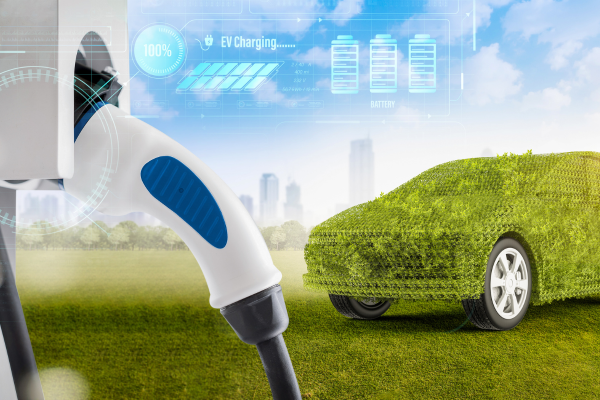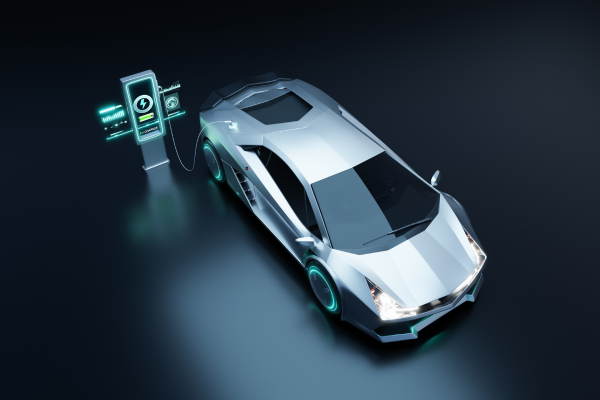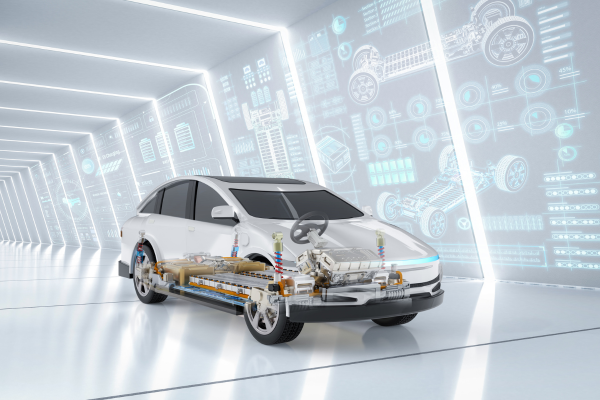Tables of Content:
- Introduction
- Benefits of Upcoming EV Cars worldwide.
- Features of Upcoming EV Cars Worldwide.
- Conclusion
- Frequently Asked Questions.
Introduction:
Benefits of Upcoming EV Cars worldwide:
1. Environmental Sustainability:

-
- Zero Emissions: EVs produce no tailpipe emissions, offering a significant reduction in greenhouse gases and pollutants, thereby combating climate change and improving air quality.
- Resource Conservation: By reducing reliance on fossil fuels, EVs contribute to the conservation of precious natural resources, fostering a more sustainable future for generations to come.
- Renewable Energy Integration: EVs can be powered by renewable energy sources such as solar and wind, further enhancing their eco-friendly credentials and reducing dependence on non-renewable energy.
2. Economic Advantages of EV Cars:

-
- Lower Operational Costs: EV owners enjoy lower fuel and maintenance costs compared to conventional vehicles, as electricity is generally cheaper than gasoline or diesel, and EVs have fewer moving parts requiring maintenance.
- Government Incentives: Many governments offer incentives, tax credits, and rebates to promote EV adoption, making them a financially appealing choice for consumers and businesses alike.
- Energy Independence: By transitioning to electric mobility, countries can reduce their dependence on imported oil, thereby enhancing energy security and fostering economic growth.
3. Enhanced Driving Experience:
-
- Instant Torque: Electric motors deliver instant torque, providing brisk acceleration and a responsive driving experience that’s both exhilarating and efficient.
- Quiet Operation: EVs offer a serene and quiet ride compared to traditional vehicles, thanks to their silent electric motors, creating a more peaceful driving environment for occupants and reducing noise pollution in urban areas.
- Regenerative Braking: Regenerative braking systems capture kinetic energy during deceleration, converting it into electricity to recharge the battery, thereby improving efficiency and extending driving range.
4. Consumer Adoption and Market Trends on EV Cars:
- Growing Demand: Consumer interest in EVs is steadily increasing, driven by concerns about climate change, air pollution, and rising fuel costs, as well as advancements in EV technology, government incentives, and shifting consumer preferences towards sustainable transportation options.
- Competitive Landscape: The EV market is becoming increasingly competitive, with established automakers, tech companies, and startups vying for market share, leading to innovation, investment, and rapid development of new EV models with enhanced features, performance, and affordability.
Features of Upcoming EV Cars:
1. Advanced Battery Technology of EV Cars:

- High Energy Density: Next-generation batteries boast higher energy density, enabling longer driving ranges and faster charging times, addressing one of the key concerns of EV adoption.
- Enhanced Durability: Improved battery chemistries enhance durability and longevity, reducing degradation over time and ensuring reliable performance throughout the vehicle’s lifecycle.
- Fast-Charging Capabilities: EVs equipped with fast-charging technology can replenish their battery capacity rapidly, offering greater convenience and flexibility for drivers on the go.
2. Smart Connectivity and Infotainment in EV Cars:
- Seamless Integration: Advanced infotainment systems offer seamless connectivity with smartphones and other devices, providing access to navigation, entertainment, and vehicle settings with ease.
- Interactive Displays: High-resolution touchscreens and intuitive interfaces enhance the user experience, allowing drivers to control various vehicle functions effortlessly and stay connected while on the road.
- Over-the-Air Updates: EV manufacturers regularly release over-the-air software updates, ensuring that vehicles remain up-to-date with the latest features, performance enhancements, and security patches without the need for a dealership visit.
3. Autonomous Driving Capabilities:

- Advanced Driver-Assistance Systems (ADAS): Upcoming EVs are equipped with advanced driver-assistance systems such as adaptive cruise control, lane-keeping assist, and automatic emergency braking, enhancing safety and reducing driver fatigue.
- Semi-Autonomous Driving Modes: Some EVs offer semi-autonomous driving modes that allow the vehicle to handle certain driving tasks under specific conditions, providing drivers with added convenience and peace of mind.
- Towards Full Autonomy: EV manufacturers continue to invest in research and development towards achieving fully autonomous driving capabilities, leveraging artificial intelligence and sensor technologies to enhance safety and efficiency on the road.
4. Sustainable Design and Materials
- Eco-Friendly Materials: Many upcoming EVs incorporate sustainable materials such as recycled plastics, natural fibres, and eco-friendly fabrics in their interior and exterior design, reducing their environmental footprint and promoting circularity.
- Aerodynamic Styling: Streamlined designs and aerodynamic features optimize airflow around the vehicle, improving efficiency and reducing energy consumption, ultimately extending driving range and enhancing performance.
- Environmental Manufacturing Practices: EV manufacturers are increasingly adopting environmentally friendly manufacturing practices, such as renewable energy usage, water conservation, and waste reduction initiatives, to minimize their environmental impact and promote sustainability throughout the supply chain.
5. Diverse Vehicle Options:
- Sedans: Upcoming EV sedans offer sleek designs, spacious interiors, and advanced features, appealing to drivers seeking comfort, style, and efficiency in their daily commute.
- SUVs/Crossovers: EV SUVs and crossovers combine versatility, ample cargo space, and rugged capabilities with zero-emission driving, catering to families and adventurers alike.
- Hatchbacks: Compact and agile, EV hatchbacks offer nimble handling, efficient use of space, and a fun-to-drive experience, making them ideal for urban environments and city dwellers.
- Trucks: Electric pickup trucks are gaining traction in the market, offering powerful performance, towing capacity, and off-road capabilities while reducing emissions and operating costs for businesses and consumers.
6. Range and Charging Infrastructure:

- Extended Range: Manufacturers are continually improving battery technology, enabling upcoming EVs to achieve longer driving ranges on a single charge, addressing range anxiety, and expanding the appeal of electric mobility.
- Growing Charging Network: Investments in charging infrastructure are on the rise, with governments, utilities, and private companies collaborating to expand the availability of charging stations, including fast-charging options, along highways, urban areas, and workplaces, facilitating long-distance travel and convenient charging options for EV owners.
Conclusion:
As we look ahead to 2024 and beyond, the future of transportation is undeniably electric. With an exciting array of upcoming EV cars set to debut on the global stage, accompanied by a host of benefits, features, and advancements, the electric revolution is poised to reshape the automotive industry and drive us towards a more sustainable, efficient, and equitable mobility ecosystem. As consumers embrace the transition to electric mobility and governments, businesses, and stakeholders continue to invest in
- Infrastructure,
- Technology, and
- Policy support,
The momentum towards a cleaner, greener future on the roads has never been stronger. With each new EV launch, we move one step closer to realizing a world where transportation is not only emissions-free but also smarter, safer, and more enjoyable for all.
As we eagerly anticipate the arrival of upcoming EV cars in 2024, it’s clear that these vehicles represent not just a technological advancement but a paradigm shift towards a cleaner, greener future.
As consumers embrace the electric revolution, the journey towards a cleaner, smarter, and more sustainable future accelerates, heralding a new era of mobility where sustainability and innovation go hand in hand.
Frequently Asked Questions:
In 2024, the benefits of EVs continue to expand. They offer reduced emissions, contributing to cleaner air and combating climate change. EVs also tend to have lower operating costs due to cheaper electricity compared to gasoline, and they often require less maintenance, saving money over the long term.
Upcoming EVs in 2024 are expected to feature advancements in battery technology, offering longer ranges and faster charging times. Additionally, many models are incorporating more sophisticated driver-assistance systems, such as autonomous driving capabilities and enhanced connectivity features, providing a more seamless and enjoyable driving experience.
Yes, many governments and regions worldwide continue to offer incentives to encourage the adoption of EVs. These incentives may include tax credits, rebates, discounted charging rates, or exemptions from certain taxes or fees. Additionally, some municipalities offer perks like free parking or access to HOV lanes for EV drivers.
Manufacturers and governments are actively working to expand charging infrastructure to alleviate range anxiety. Many upcoming EVs in 2024 are equipped with longer-range batteries, making them suitable for more extended trips. Moreover, advancements in fast-charging technology are reducing charging times significantly, making EV ownership more convenient for consumers.
By 2024, increased adoption of EVs is expected to lead to significant reductions in greenhouse gas emissions and air pollutants, improving air quality and public health. Additionally, as renewable energy sources continue to grow, the environmental benefits of EVs will further amplify, as they can be powered by clean energy, further reducing their carbon footprint over their lifecycle.

